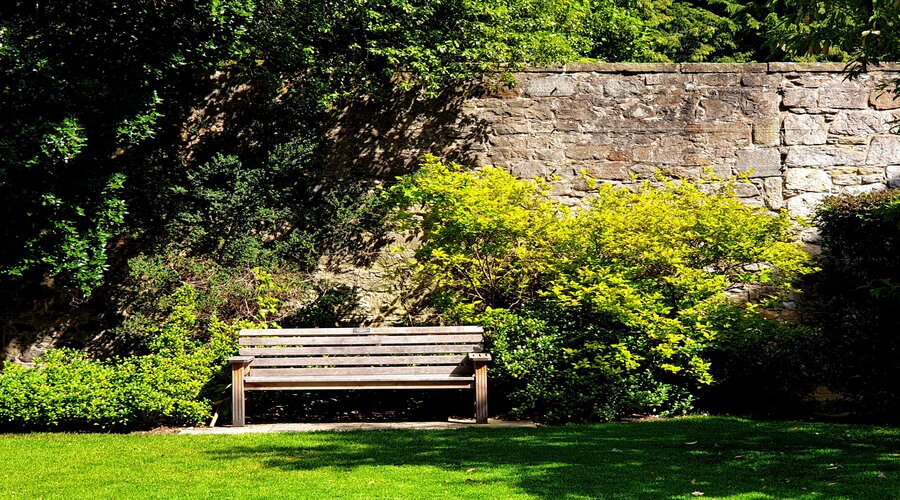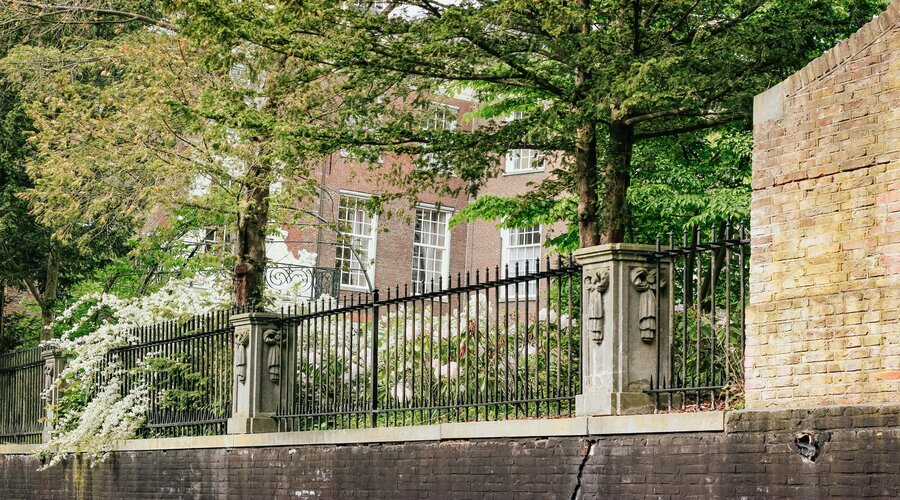How to Paint Retaining Wall

Retaining walls play a vital role in both your overall property value and enhancement. These walls are functional, versatile and an excellent addition to your property's exterior.
When it comes to retaining walls as decor, many prefer the natural look of stone or concrete, while others will choose to paint these walls to create new striking designs. Painting a concrete or stone retaining wall may seem like a deceptively easy job; however, the level of maintenance and sheer size of the surface can prove challenging. As well, the wrong materials and application can damage your wall, trapping in moisture and other containments.
Using a professional painting service, you can ensure the right retaining wall painting supplies and application are applied.
In this article, we will discuss some of the fundamental aspects of retaining walls and their painting.
What Is a Retaining Wall?
A retaining wall, also known as revetment or breast wall is an exterior structure, constructed to withstand the lateral pressure of soil and water.
Instead of the conventional exterior wall structure with uniform inclines on even areas, retaining walls are built on lumpy, ragged areas or damaged areas to prevent further destruction. Retaining walls are made from various materials including concrete blocks, timber, boulders and rocks. While some retaining walls are temporary, most of them are made sturdy with longer life-span.
In general, retaining walls are designed and built with slightly inward lean, incorporating drains to prevent soil and water erosion from backing up.
Types of Retaining Walls

There are different types of retaining walls, all of which serve their purpose. Some of the common retaining walls are-
- Gravity Retaining Wall- one of the most commonly used retaining walls and their name suggests, use their weight to resist the lateral earth pressure. These walls can be constructed from brick, concrete or stone.
- Cantilevered Retaining Wall- Cantilevered retaining wall, also known as reinforced retaining walls, is mostly used on construction sites. These retaining walls use L or T shaped footing poles under the soil affixing to a slab foundation that goes under the ground.
- Anchored Retaining Wall- Anchored retaining walls are vertical walls supported by "anchors" or dead weights attached by cables, chains or strips inserted into the ground. They offer more support and sturdiness compared to gravity retaining walls.
- Sheet Piling Retaining Wall- Sheet piling retaining walls can be used as permanent and temporary retaining walls during construction projects. The sheet piles facilitate deep excavations for underground construction and water levels.
Types of Common Retaining Wall Materials
Retaining walls use a variety of materials - here are some of the most common:
- Wood- Wood retaining walls tend to blend into the landscape, looking more natural.
- Boulder- Boulders are large types of natural stone, that are durable and available in many colours.
- Concrete Block- concrete blocks are modern, commonly used retaining wall material that is produced artificially.
- Brick block- Brick blocks are the conventional retaining wall material that complements any traditional landscapes.
- Timber- Timber is an affordable retaining wall material, but the only drawback is the susceptibility to termites.
Steps of Retaining Wall Painting

Just like any exterior painting application, painting retaining walls can be broken into multiple steps. However, due to the uneven material used in raining walls, we'd recommend a professional undergo the task. Preferably Dulux accredited painters who can handle the entire process from start to finish. With that said, here are the main steps to paint retaining wall surfaces.
Step-1: Repair Existing Problems (If There's Any)
Cracking, bulging and sagging walls are some of the most common yet significant damage a retaining wall can experience. Usually caused by poor draining or defected footing, these cracks and bulges will need to be repaired by a professional before the walls can be painted.
Minor cracks can be repaired by chiselling the hole and filling it with hydraulic cement. You can also use elastomeric caulks to fix surface gaps.
Step-2: Gather the Necessary Painting Supplies
Retaining walls require the f following painting supplies, including paint trays, wide paint brushes-handles, rollers, paint sprayer, putty knives, mixing stick and safety-step ladders. Last but not least, a wide retaining wall will need a lot of specialised latex exterior paints. These paints need to not only be water and temperature resistant but contain additives like fungicides and pesticides. The formula will also need to take into consideration the material of the retaining wall.
Step-3: Prepare the Wall Surfaces for Painting
With the equipment accounted for, it's time to prepare the walls for the paint. If the retaining walls are relatively new, consider thoroughly washing and rinsing the entire surface with water. Ensure the walls are completely dry then, thoroughly clean the surface with an industry-standard retaining surface cleaner.
If the retaining walls are older, consider power washing to remove moss and mould. Once the walls are thoroughly washed and dry, use the putty knife to fill any holes in the surface.
Once cleaned, cover the entire wall with two coats of Dulux Exterior Texture Primer.
Step-4: Start the Paint Job
Use a small brush to paint the small sections, edges, corners and places where a wide paint roller or brush can't reach. Once the details are painted out, use a wide paint roller, following the same direction to avoid overcoating.
Use extension handles and step ladders to reach distant spots. For even larger retaining wall surfaces, use a paint sprayer to cover more area.
Don't forget to use drop cloths to wipe off any drips or spills immediately.
Once the painting is evenly applied, let the coat dry for one or two days and apply a second coating if required.










